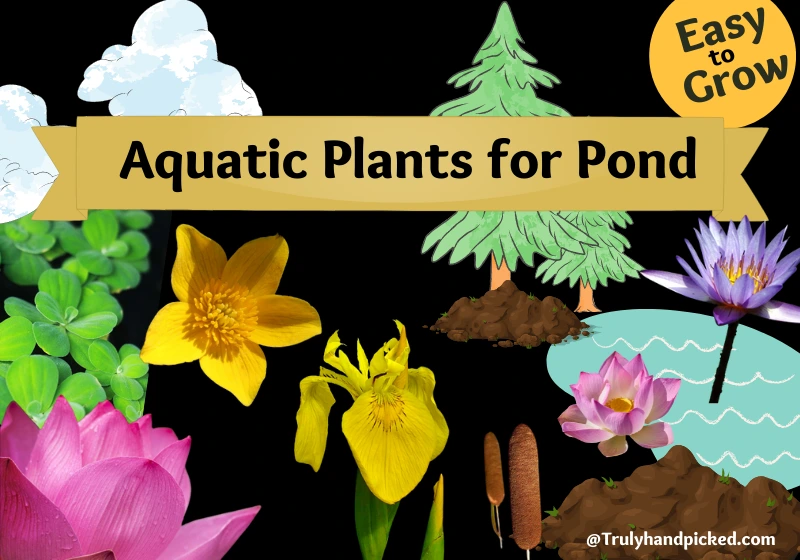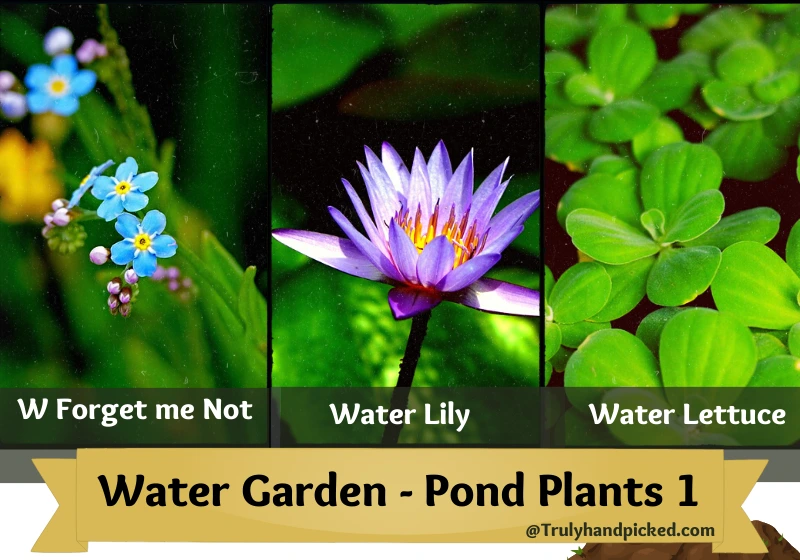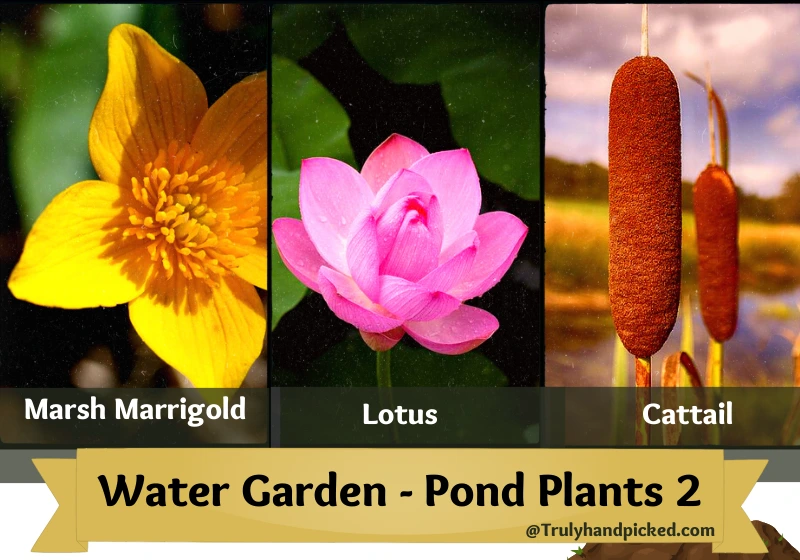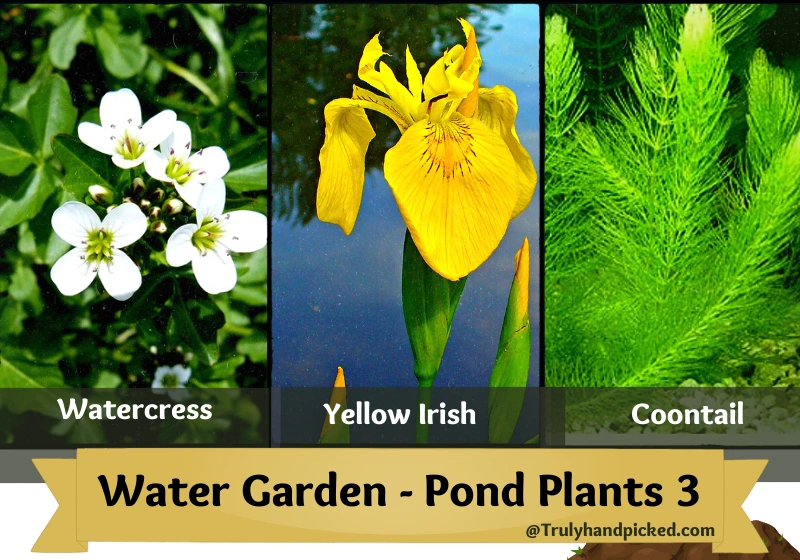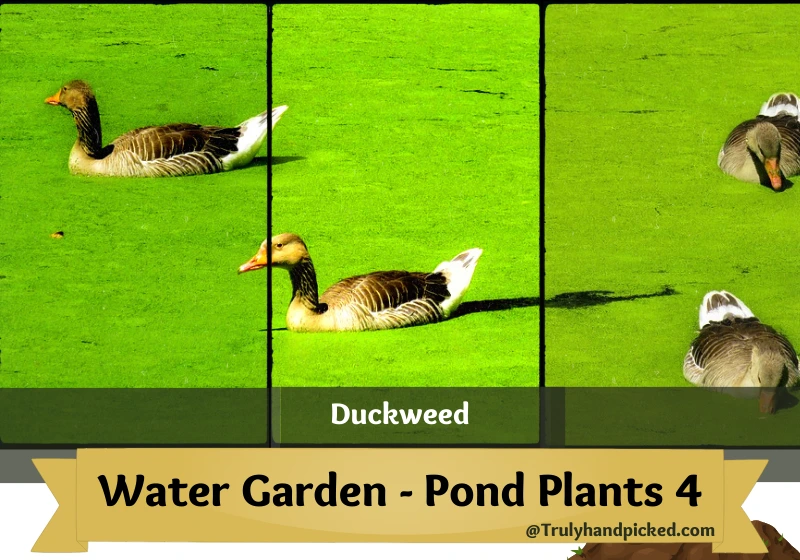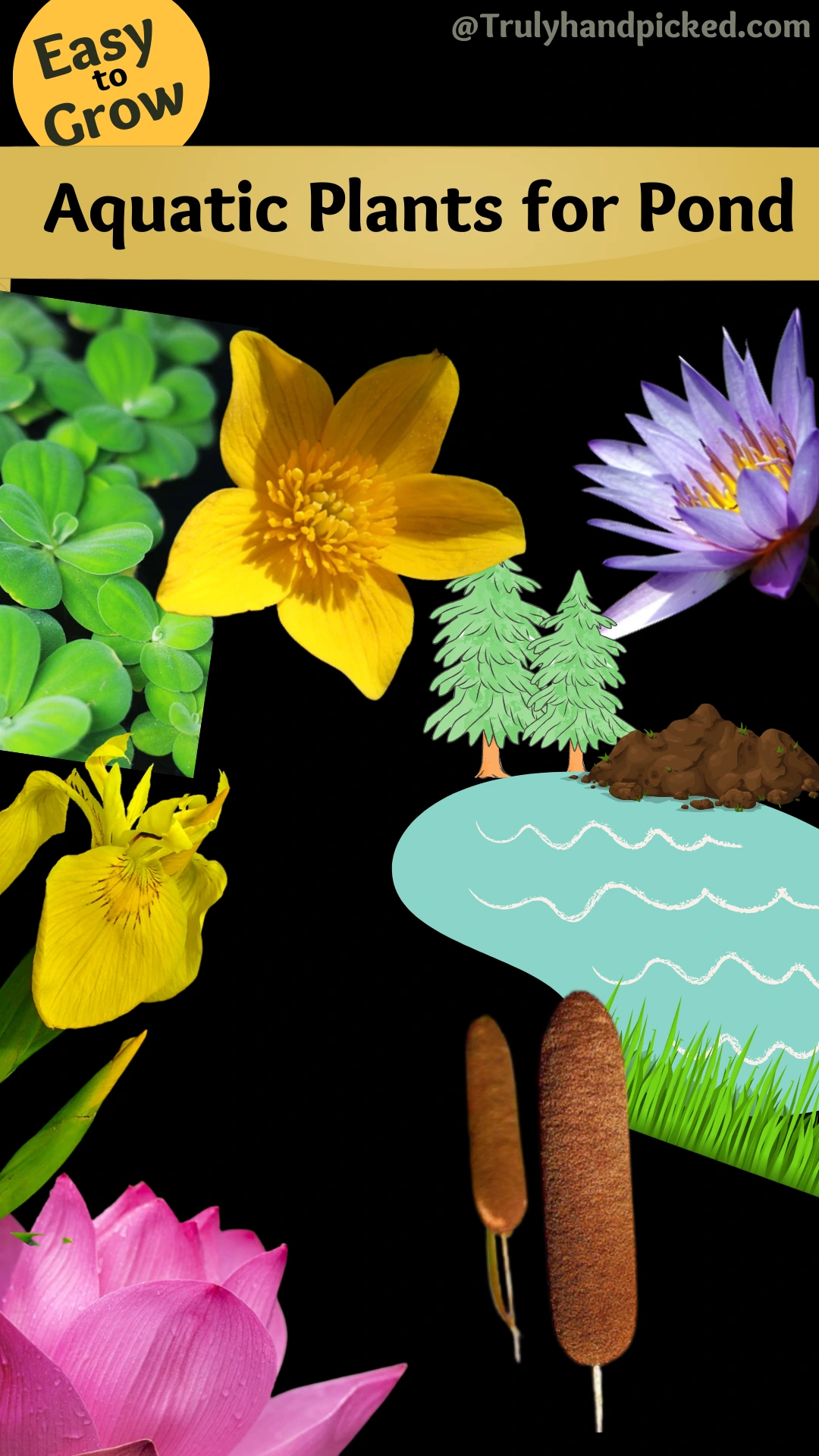Gardeners, who are fortunate enough to have a wide outdoor space in their yard, often agree to water gardening. Growing plants in your pond are always fascinating.
So, if you have some extra space in your yard, just go for the water gardening option without thinking twice! You just need to install an artificial pond in your outdoor garden area at the right spot. Make sure the pond could get a proper environment with a lot of bright light there.
Once you arrange all its fundamental requirements, pick some right aquatic plants to cultivate in your pond. You can choose water plants from plenty of categories, like floating plants, marginal plants, submerged plants, or even bog plants.
Here we emerge with the best 10 options in this regard. Some of them are beautiful, while a few are highly beneficial to the habitat. Let’s take a quick look at them-
Best Pond Plants for Your Water Garden
Water Lettuce:
About The Plants:
- This is an aquatic species of the Arum family
- It is also known as water cabbage and shellflower
- This is a perennial plant
- It can grow up to 6 inches tall and 10 inches wide
Growing Tips:
- Place this plant under the full sun for bright and direct light
- Keep the water pH level neutral to slightly acidic
- Feed your plant once a month by merging liquid fertilizer directly into the pond
- Maintain a low humidity and keep it under the hardiness zone 8 to 10
Water Lilies:
About The Plants:
- This is one more brilliant option for still water cultivation like ponds
- It grows as a rhizomatous aquatic herb
- This plant produces broad heart-shaped leaves along with bright colorful flowers
- It can grow up to 3-6 inches tall and 4-8 feet wide
Growing Tips:
- Place this plant under full sun and right direct sunlight
- Keep the water pH neutral and hardiness zones between 4-10
- Maintain a warm temperature of about 70° F or up with a medium humidity level
- And feed your plant once every 6-7 weeks by applying liquid fertilizer directly into the water.
Water Forget-Me-Not:
About The Plants:
- It is an easy-to-grow aquatic plant that can grow up to 12 inches tall with an equal spread
- You can grow it as a flowering pond-margin plant
- It is an herbaceous perennial aquatic species from the Boraginaceae family
- This plant grows tiny flower clusters in the blue shade around green foliage
Growing Tips:
- Place this plant under the sun with partial shade and bright but indirect light
- Keep the humidity level high and temperature up to 75° F consistently
- You can feed the plant once a month with any commercial liquid fertilizer
- It can grow up in a hardiness zone 6-12
Lotus:
About The Plants:
- Lotus is one more great option to grow in your pond for stunning blossoms
- It belongs to the Nelumbonaceae family provides a similar look to the water lily
- This plant can grow up to 8-12 inches tall and 5-6 inches wide
- It produces big round shape foliage in green shade and way layer, along with wide pinkish flowers with several petals.
Growing Tips:
- Put the plant where it can grab bright and direct sunlight
- Maintain the temperature moderately warm with a low-medium humidity level
- Keep your plant in a hardiness zone between 5-10
- And feed it once every 6-8 days with any balanced liquid fertilizer
Marsh Marigold:
About The Plants:
- It is one more marginal plant option with bright catchy flowers
- This aquatic species of marigold is a perennial
- It can thrive up to 8-10 inches tall with 20-24 inches width
- This plant produces glossy green big foliage and medium-size with 5-petal yellow blooms
Growing Tips:
- Place your plant under bright and direct sunlight
- Keep the temperature warm to about 68 to 75° F with a high humidity level
- Maintain the water pH level to a slightly acidic
- Feed your plant with an all-purpose liquid fertilizer twice a year
Cattail:
About The Plants:
- It is an aquatic perennial plant with creeping rhizome
- This plant is famous for its unique features
- It can grow up to 6 feet tall with a small 2-3 inches spread
- The plant produces sleek tapering leaves with a spongy texture along with dense cylinder-like spikes
Growing Tips:
- Let it grow under full sun exposure to the sun with partial shade
- Keep the temperature consistently warm, above 60° F with moist condition
- Feed your plant two-three times a year with a water-soluble fertilizer
- And let this grow in a hardiness zone between 3 to 10
Coontail:
About The Plants:
- Coontail is an ornamental plant, famous for its fern-like leaves in coon tail shape
- It is a free-floating aquatic species from the Ceratophyllaceae family
- This plant is also known by several other names including hornwort and rigid hornwort
- Coontail can grow up to 8 feet tall with proper care with 2 inches width
Growing Tips:
- Put it under the sun with partial to full shade for low and indirect light
- Maintain a temperature anything between 50 to 80° F with high humidity
- You can keep your plant in various hardiness zones starting from 3 to 12
- And feed your plant with a fertilizer that is high in nitrogen as well as phosphorus content, twice a year
Yellow Irish:
About The Plants:
- This is one more attractive flowering plant option for a pond
- Yellow Irish is famous for its flag-like blooming quality over a green stalk of leaves
- This aquatic flowering species is pseudacorus and belongs to the Iridaceae family
- It can grow up to 3 feet tall with 6 inches width
Growing Tips:
- Put this plant under full sun to the sun with partial shade
- Keep the water pH level slightly acidic
- Feed your plant with compost or manure tea once every 3-4 months
- And keep the temperature moderately high with an average humidity level
Watercress:
About The Plants:
- This is an herbaceous perennial from the Brassicaceae family
- It can grow up to 6 inches long with an equal amount of spread
- Its curvy green foliage is edible ad highly nutritious
- Watercress occasionally blooms once a year during summer
Growing Tips:
- Place your plant under full sun to the sun with partial shade
- Use compost tea to feed your growing watercress once a month
- Keep the temperature averagely warm like 65-75° F
- Be attentive for any kind of infestation of bugs or pests, as its fresh foliage are scrumptious enough to grab bugs’ attention easily.
Duckweed:
About The Plants:
- Duckweed is one more herbaceous aquatic flowering weed from the Araceae family
- This plant thrives best in water surface marshes, lakes, water tanks, etc. apart from ponds
- It is one of the quick-growing water weeds that produce clusters of green tiny leaves and blooms only in summer
- A duckweed plant could grow up to 1-15 mm in length and 1-16 mm in width
Growing Tips:
- It prefers full sun and direct bright light to thrive
- This plant grows best in water with a slightly acidic pH level
- Keep the temperature level between 60 to 70° F with moderate humidity
- And feed your plant once every 2 months with liquid, diluted fertilizer in a 10-10-10 NPK ratio.
